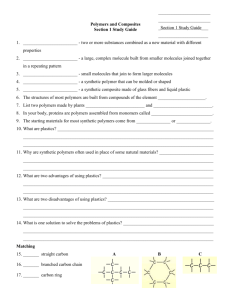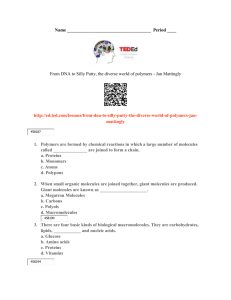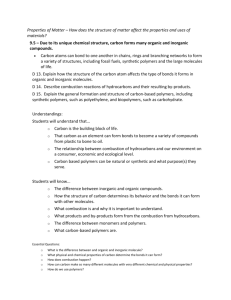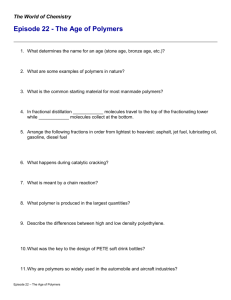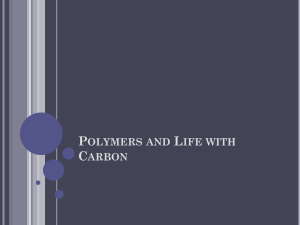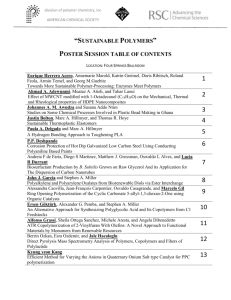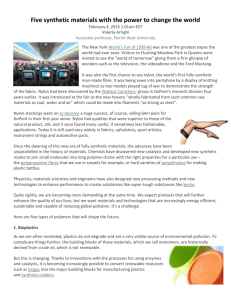Unit III - Bloomfield Public Schools
advertisement
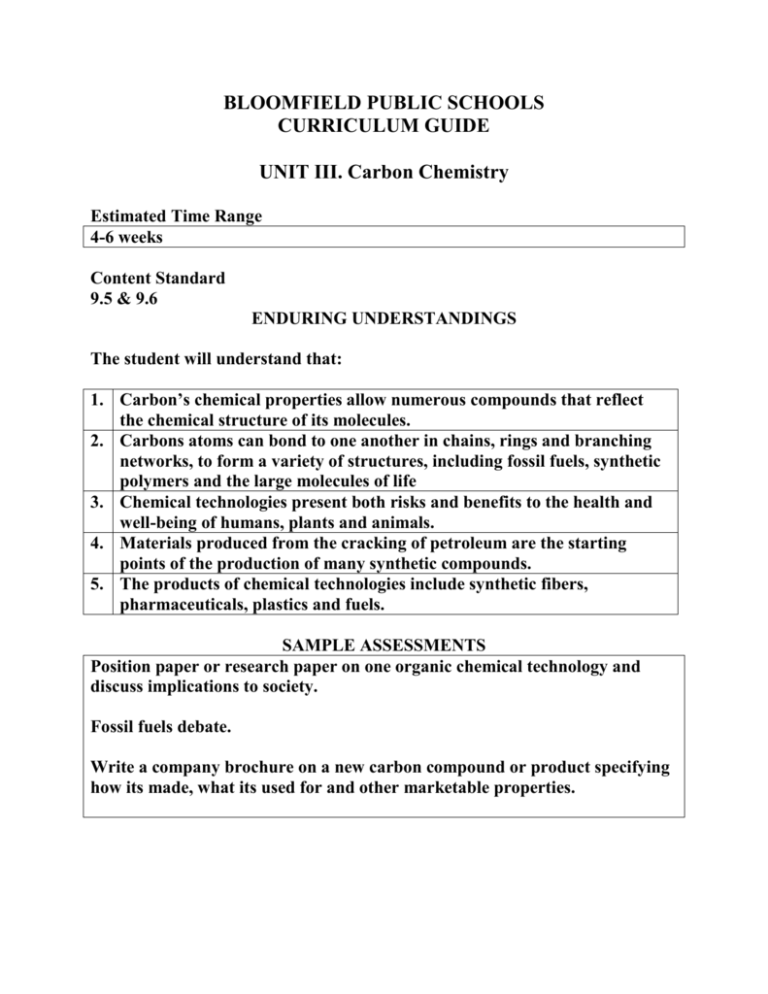
BLOOMFIELD PUBLIC SCHOOLS CURRICULUM GUIDE UNIT III. Carbon Chemistry Estimated Time Range 4-6 weeks Content Standard 9.5 & 9.6 ENDURING UNDERSTANDINGS The student will understand that: 1. Carbon’s chemical properties allow numerous compounds that reflect the chemical structure of its molecules. 2. Carbons atoms can bond to one another in chains, rings and branching networks, to form a variety of structures, including fossil fuels, synthetic polymers and the large molecules of life 3. Chemical technologies present both risks and benefits to the health and well-being of humans, plants and animals. 4. Materials produced from the cracking of petroleum are the starting points of the production of many synthetic compounds. 5. The products of chemical technologies include synthetic fibers, pharmaceuticals, plastics and fuels. SAMPLE ASSESSMENTS Position paper or research paper on one organic chemical technology and discuss implications to society. Fossil fuels debate. Write a company brochure on a new carbon compound or product specifying how its made, what its used for and other marketable properties. ESSENTIAL QUESTIONS 1. How does the structure of matter affect the properties and uses of materials? 2. How does science and technology affect the quality of our lives? LEARNING OBJECTIVES The student will be able to: 1. Explain how the structure of the carbon atoms affects the type of bonds it forms in organic and inorganic molecules. 2. Describe combustion reactions of hydrocarbons and their resulting byproducts. 3. Explain the general formation and structure of carbon-based polymers, including synthetic polymers such as polyethylene and biopolymers such as carbohydrates 4. Explain how simple chemical monomers can be combined to create linear, branched and/or cross-linked polymers. 5. Explain how the chemical structure of polymers affects their physical properties (strength, flexibility). SUGGESTED RESOURCES Physical Science – Concepts in Action with Earth and Space Science Prentice Hall Wyession, Frank, Yancopoulos ISBN #: 0-13-069982-9 Chapter 9 Global Science – Energy, Resources, Environment Kendall, Hunt Publishing Company Christensen ISBN #: 0-7872-9010-6 Chapter 2, 3, 6, 7 & 10 Molecular model lab Saponification Lab Preparing a cross-linked polymer Esterification Lab “Apple Juice” CAPT Lab SUGGESTED CONNECTIONS
